We all know how unreliable the weather is but we can always count on periods of drought, sites that are sunny and dry, and containers in the sun that dry out very quickly. One of the mainstays of such sites is the huge genus, Sedum. Few genera offer so much versatility in size, form, texture, and color. Thus, Sedum is a boon to all gardeners and landscape designers, even in Cleveland.
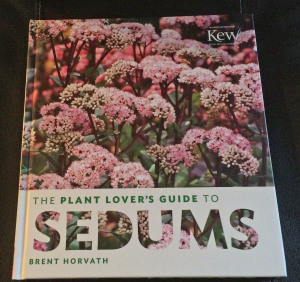 Although I am a certified plantaholic, I had no idea that there were so many different textures and forms until I read The Plant Lover’s Guide to Sedums by Brent Horvath, a perennial nursery owner and breeder. Brent divides sedums into two categories: those used as border plants and those used as groundcovers.
Although I am a certified plantaholic, I had no idea that there were so many different textures and forms until I read The Plant Lover’s Guide to Sedums by Brent Horvath, a perennial nursery owner and breeder. Brent divides sedums into two categories: those used as border plants and those used as groundcovers.
Those used as border plants have been reclassified botanically as Hylotelephium. These plants are upright, look like light green broccoli during the summer and are in their glory in the fall but also look like sculptures in the winter, especially when covered with snow. They combine beautifully with ornamental grasses, offering great textural and form contrast to the linearity of the grasses. They also combine well with many other perennials that also like full sun and well-drained soil and Brent suggests several combinations.
It had never occurred to me to use the upright Sedum as a low hedge but the photos make such a hedge quite attractive. My only qualm is the amount of spring maintenance that would be needed.
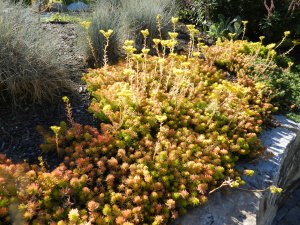
Sedum ‘Angelina’ in bloom but also with orange fall color at the Coastal Maine Botanic Garden in mid-July. the lower temperatures have affected the foliage color.
The groundcover sedums are very useful in unirrigated areas and on slopes to prevent erosion. They are also relatively maintenance free except for controlling their tendency to spread but they are much easier to control than groundcovers like Bishop’s Weed that have far-reaching root systems or Veronica chamaedrys which forms a tight mat, squeezing out everything in its path. While many are deciduous, others change color during the fall and winter. An excellent example of that is the popular Sedum ‘Angelina’. It has yellow foliage that takes on an orange cast during the winter. Some of the newer but very short upright sedums, called cloud sedums by Brent, can also be planted closely and used as slightly taller groundcovers.
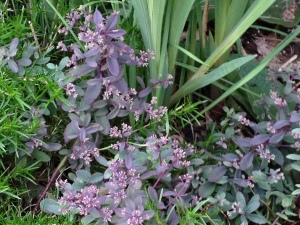
Sedum ‘Plum Perfection’ in my garden; the purple tinged foliage is accentuated my the lavender-pink flowers.
Whether an upright or a groundcover Sedum, this genus offers a wide range of foliage color that is delineated in several lists. Although we think of sedums for sun, there are a few that thrive in shade and a page is dedicated to those. There is also a discussion of the ones best for rock walls, green walls, green roofs, and fairy gardens.
As I mentioned earlier, the upright sedums are now Hylotelephium. Unfortunately for those of us who are not taxonomists, there are now four other types of sedums that Brent identifies and explains as simply as possible. Although we recognize sedums by their foliage, they have different types of flowers that are used to identify them and they bloom at different times depending on the new genus or species.

Sedum ‘T Rex’ with Dendrathema ‘Rosy Igloo’ and Caryopteris divaricata ‘Snow Fairy’ in my back garden
While there is also a section on growing and propagating sedums, the bulk of the book is dedicated to discussing the zone hardiness, cultural needs, and landscape and garden design uses of 150 sedums useful in the garden. The beautiful photographs will make it easy to identify sedums that you have seen or will now want.
Since the last book on sedums was written in 1994, there have been many taxonomic changes and new introductions. Brent has taken a very complex genus and delivered it to us in an understandable way. This is a reference book you need on your shelf.


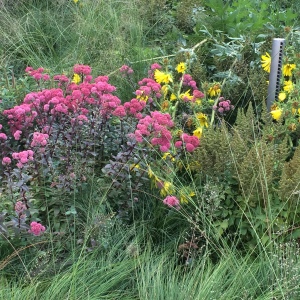
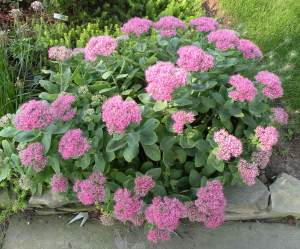
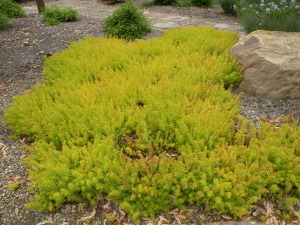

0 Comments